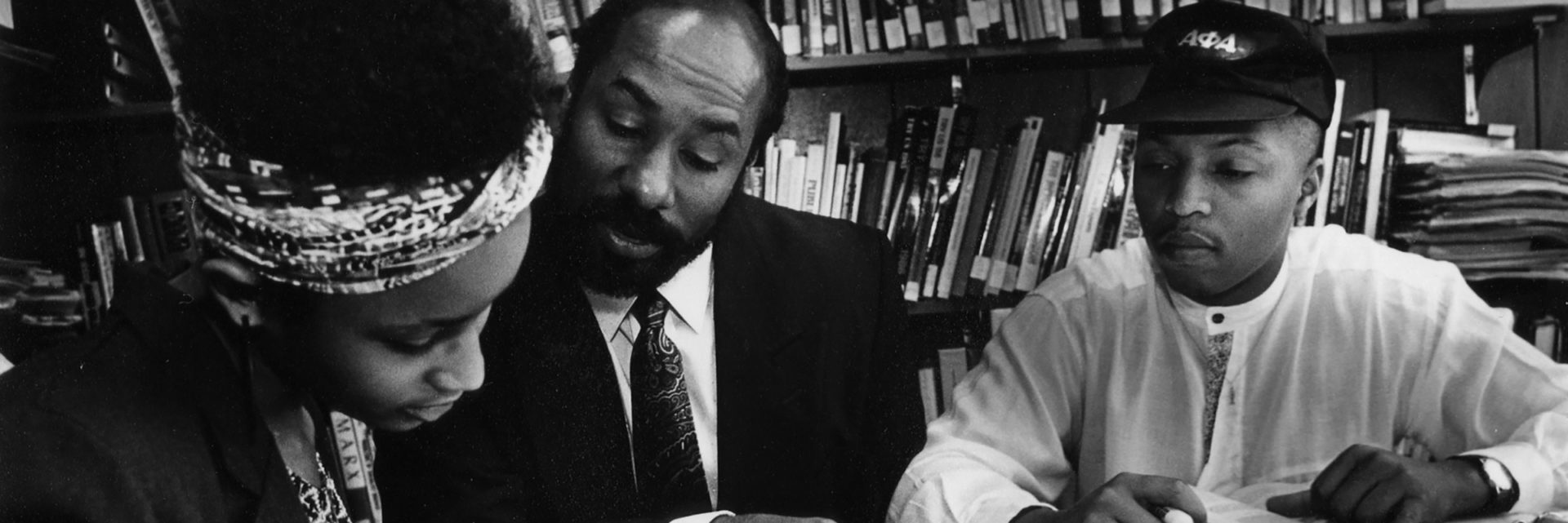Denison has one of the oldest black studies programs in the country; the very first, at San Francisco State University, was founded only two years earlier, in 1968. How did Denison’s program get started?
The board of trustees approved the establishment of a program in 1970. But there had been an interdepartmental course offered in 1968-1969 called “Black Culture in America” that was taught by Bill Nichols, a professor of English, and Charles Henry ’69, a senior political science student who later came back to Denison to direct the program.
They brought to campus intellectuals and political activists from across the country as guest speakers, and piloted components they had in mind for a black studies program: black politics and religion, black music and theater and literature, an exploration of the history of slavery, a segment on what was then called “the crisis of the inner city.”
Of the 1,850 students or so enrolled at the college in 1968, only 13 were African-American. But close to 250 students enrolled in that course. They filled Slayter auditorium.
Didn’t a couple of African-American students who helped found the Black Student Union—David McBride ’71 and Monroe Little ’71—offer an African-American studies course at around the same time?
That was in 1969, when students went on strike because the college had moved more slowly than students had wanted in hiring more black faculty, starting a black studies program, and so on. The Black Student Union issued a long list of what were called “the Black Demands” to the college, and after going on strike, students boycotted existing courses and created an Alternative College.
In 1971, Carlton Trotman, a psychologist on leave from Lincoln University, an historically black college in Pennsylvania, came to help envision what a black studies program might look like. And in 1972, Arthur Zebbs, a black activist and minister from Columbus who came to Denison to assist Jack Kirby, an historian, teach courses in African-American history, was appointed the first full-time director.
A number of similar programs soon appeared across the country. Why then?
I think it was part of the spirit of the time. Martin Luther King’s assassination, and then the emergence of Black Panthers and the Black Power movement, led to a desire to rediscover African roots and to explore missing dimensions of African-American life that had not been investigated in an intellectual way.
What were those early years like?
Courses just started to proliferate in the curriculum, in the fine arts and social sciences especially.
The Black Studies Committee used to meet on a weekly or biweekly basis, and much of our conversation had to do with how we could get faculty members to incorporate into their courses material on what we were calling “the black experience” at that time.
We were also trying to build a core of black studies courses that focused specifically and uniquely on either the African, the Caribbean, or the African-American experience. From the beginning, we had the sense that there ought to be a tripartite relationship represented between Africa, North America, and the Caribbean—which is one of the reasons we stuck with the term “black,” which came out of the ’60s, rather than “Afro-American” or “African-American.” We wanted to make sure that we weren’t isolating ourselves from other parts of the diaspora.
Were those courses and materials considered new by some faculty members?
Oh, yeah. They weren’t part of the canon, so to speak. There might have been individual members of existing academic departments like anthropology, history, music, and art exploring African contributions, but those were done pretty much in isolation from each other. Black studies was all about bringing a unique field of study together thematically, theoretically, and methodologically.
The variety of courses currently on offer is huge—from African dance to global health. Was the program always so inclusive?
It was constructed to be broadly interdisciplinary from the very beginning. Our goal was never to become a silo and to be isolated from the intellectual life of the academy, broadly conceived; and we defined ourselves as an area of study that works to transform other disciplines by asking them to look at things from multiple perspectives.
So we fought to make sure that students were exposed intellectually to black culture and the black experience, but we also pushed for the establishment of other programs that would now be called programs of diversity, like women’s studies and Latin American studies. The term intersectionality is invoked today, but we were sort of living it during those days.
What’s in store for the next 50 years?
We just made a new tenure-track hire in black studies: Dr. Terrance Dean, who is interested in Afrofuturism, sexual identity, race, and migration. We’re very excited about the new perspective he will bring—and we’re hopeful for an increasing number of interdisciplinary research projects that feature collaborations between multiple black studies faculty members rooted in different disciplines.
In fact, Terrance will be teaching a new course during the Fall 2020 semester titled “From Denison to Allensworth, California: The Idea of Race, Social Justice, and Black Genius.” He and I and other black studies faculty will collaborate on a research project that centers on the first township in California to have been built and governed by African-Americans.
One of its co-founders was Prof. William A. Payne 1906, a black alumnus who helped purchase 800 acres of land to build a town where African-Americans could live free, own property, learn, create, and live the American Dream without encountering racial prejudice and discrimination. Black Studies hopes to produce other such collaborative research projects in the coming years.

